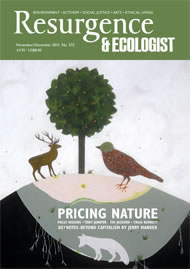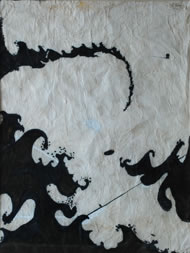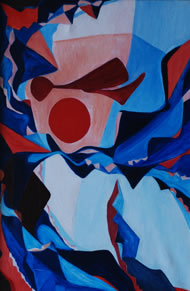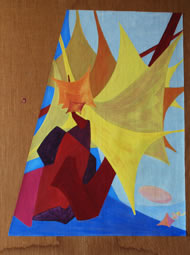Classical physics is materialism. Everything is explained in terms of moving material particles obeying Newton’s laws. “God in the beginning form’d matter in solid, massy, hard, impenetrable particles,” Isaac Newton wrote in the 17th century, “so very hard, as never to wear or break in pieces.” In contrast, in the 20th century the discovery of quantum physics led Werner Heisenberg to conclude that atoms and elementary particles “do not exist as simple material particles”.
Quantum physics is the branch of physics that deals with the elementary constituents of things: electrons, atoms and molecules. At the level of these things we discover that: 1) the basis of the material world is non-material; 2) there is a part of reality that we can’t see, but it is real, because it has the potential to act on us; 3) reality is an undivided wholeness; and 4) consciousness is a cosmic property.
In Erwin Schrödinger’s quantum mechanics, the electrons in atoms and molecules aren’t material particles or little balls, but standing waves. You have to think of these waves as patterns of information or mathematical forms. Their nature is that of probability waves. But probabilities are dimensionless numbers, which carry no mass or energy, but just information on numerical relations. Nevertheless, the visible order of the world is determined by the interactions of these invisible waves. Their interference determines, for example, what kinds of molecules exist and indeed how these molecules interact in our body to keep us alive.
In modern science, the discovery of non-material forms as elements of reality was a surprise, but new it is not. Already in the 6th century BCE Pythagoras taught that “all things are numbers”; and Plato too believed that atoms were mathematical forms. Thus the ancient sages sensed that, when we pursue the nature of matter to its roots, at the level of atoms the notion of matter is lost, and we find ourselves in a realm of non-material forms.
As non-material entities, these forms are invisible. They transcend our experience, because there is nothing there to see. Nevertheless, they are real, because they have the potential to manifest themselves in the empirical world and act in it. They form a realm of potentiality in the physical reality, reviving Aristotle’s theory that there are three modes of being: real-being, non-being and potential-being. Since they transcend our experience, we can’t really know the precise nature of the forms in the realm of potentiality, but indications are that they are waves and that these waves are contiguous, like the water waves in an ocean. From such considerations the notion arose that the transcendent background of the universe is an undivided wholeness, in which all things and people are connected.
In the waveforms of molecules we discover the equivalence of the mental and the physical. Molecules undertake nothing that isn’t allowed by the waveforms of their quantum states, which exist in a molecule like a system of inner images. The concept of the inner images derives from psychology. Brain scientist Gerald Hüther calls inner images all that “which is hidden” behind the visible surface of living beings and which controls their actions. In chemistry, a molecule does nothing that isn’t allowed by a waveform – an inner image – of a quantum state.
In life, a human being undertakes nothing that isn’t allowed by an inner image of the mind. This is the equivalence of the mental and the physical. Quantum physics appears as the psychology of the universe. Since inner images control all molecular processes, they must have controlled, too, the evolution of life. Thus we can think that the evolution of life is a process of adaptation of life forms to forms in the cosmic realm of potentiality.
From the congruence of the mental and the physical, it was a small step to the notion that consciousness is a cosmic property. It isn’t that physicists looked in their research for evidence of a cosmic consciousness. There were no sudden revelations, but subtle suggestions, by which a number of physicists were gently nudged to this conclusion.
Take, for example, the fact that the quantum wave functions form a realm of potentiality. In this they are more thought-like than thing-like. Thoughts, too, have the nature of potentiality. Your thoughts are real in you, invisible to others, but they have the potential to express themselves in the empirical world. If the wave functions of quantum states are thoughts, the question arises: in whose mind do they exist? Similarly, the waves in the cosmic realm of potentiality are patterns of information. Normally, information is intended for the benefit of a mind or a consciousness. Thus the question is: whose consciousness is involved? Since these forms exist in a transcendent realm of the universe, does it mean that there is a cosmic consciousness?
In this way many pioneers of quantum physics were led to conclude that “the stuff of the world is mind-stuff,” as Arthur Stanley Eddington expressed it in the 1930s.
A particularly powerful argument for consciousness as a cosmic property derives from David Bohm’s view that reality is an “undivided wholeness”. If the universe is an undivided wholeness, Menas Kafatos and Robert Nadeau concluded, then everything comes out of the wholeness and belongs to it, including our consciousness. Thus consciousness is a cosmic property.
As before, the appearance of this idea in physics was a surprise, but new it is not.
Already in the 18th century, the German Idealist philosopher Georg Wilhelm Friedrich Hegel taught that “Absolute Spirit” is the primary structure of reality, and everything comes out of it and belongs to it, including your own thinking, which is ultimately the thinking of the cosmic spirit, who is thinking in you.
And even Hegel wasn’t the first to express such views. Thousands of years prior to Hegel, the Indian sages described how, when you take a large number of pots filled with water and place them in the sun, the sun is in each one of them, even though there is only one sun. In the same way, they concluded, consciousness is found in countless human beings, even though there is only one consciousness: the cosmic consciousness.
Many physicists react with anger to such comparisons. But whether you like it or not, fact is that by the way in which quantum physics describes the world it has taken science into the centre of ancient spiritual teachings. For example, in the metaphysics of Plotinus, who lived in the 3rd century CE, God is the One and the world isn’t the creation of the One but, as Johannes Hirschberger describes it, an emanation due to a necessary flowing over of the Divine.
Each molecule contains a practically infinite number of quantum states, one of which is occupied, while the others are empty. Quantum chemists call the empty states ‘virtual’. They represent the realm of potentiality in a molecule, out of which the future empirical structures emerge. Thus in contemporary physics all empirical structures are actualisations of virtual states. In a stunning way, the exact same term was used by Meister Eckhart, a German medieval monk and mystic, to explain the empirical world. Meister Eckhart believed that the empirical world is an actualisation of an invisible order, which he called the “virtual being” of things. One has to wonder what exactly is going on in the human mind when a medieval mystic and a group of contemporary chemists independently call ‘virtual’ a non-empirical realm of reality.
The virtual states of molecules exist as waves. Thus the empirical world is a creation out of a realm of waves. In Kashmir Shaivism, the visible world comes out of Spanda: subtle vibrations, waves, or throbs in the divine. As Muller-Ortega describes it, Spanda “is the wave of the ocean of consciousness, without which there is no consciousness at all.” Do we have to believe that Schrödinger’s wave functions are throbs in the divine?
For the contemporary Western mind it is impossible to accept the congruence of the physical, the spiritual and the mental, and a metamorphosis of our consciousness is needed to accept the worldview of the new physics. Thus the discovery of the quantum phenomena can be taken as a sign that the structure of our consciousness is undergoing a mutation of the kind Jean Gebser has described for several stages of our evolution.
And in a holistic quantum universe, cosmic order can serve as a model for human order. There is no conflict between a spiritual and a rational understanding of the world, and we can construct a world order based on cooperation, not competition, and on kindness, not aggression.
A few words from Lothar on his paintings, which illustrate this article:
"When I grew up, I was fascinated by waves. I loved the ocean and every day I watched the waves on the river Rhine, on whose banks I grew up. As time went by, my passion for waves became so intense that I felt an urge to make paintings of oceans and waves. The problem with my paintings was that the waves, which I painted, came out of everywhere, including the sky. Whenever I painted oceans, their waves came out of singular points in the sky, and boats sailed through space like airplanes. At the time I was not aware of concept of Spanda, the invisible cosmic vibrations or throbs in the Divine, which the ancient Indian sages taught as the creative principle of the universe. Now I have no doubt: My passion for waves was the urge of Spanda in me."









